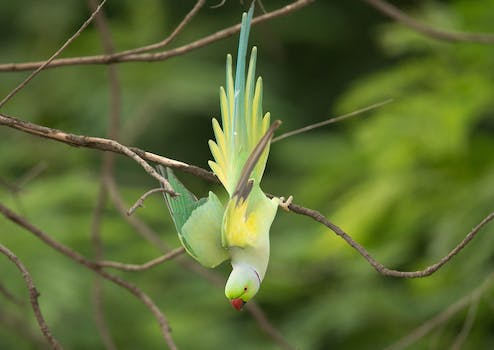

The ultimate guide to creating the perfect home for your furry friend.
Introduction
Introduction:
Best Hamster Homes: A Complete Guide for Pet Owners
When it comes to providing a comfortable and safe living environment for your pet hamster, choosing the right hamster home is crucial. With so many options available in the market, it can be overwhelming for pet owners to make an informed decision. That's why we have created this comprehensive guide to help you find the best hamster home for your furry friend.
In this guide, we will explore various types of hamster homes, including wire cages, plastic habitats, and glass tanks. We will discuss the pros and cons of each option, considering factors such as size, ventilation, ease of cleaning, and accessibility. Additionally, we will provide tips on setting up the hamster home, including bedding, toys, and accessories that will enhance your hamster's quality of life.
We understand that every hamster has unique needs and preferences, so we will also cover considerations for different hamster breeds and sizes. Whether you have a Syrian hamster, a dwarf hamster, or any other type of hamster, this guide will help you choose the most suitable home for your pet.
Furthermore, we will address common concerns and questions that pet owners may have, such as how to prevent escape attempts, how to maintain proper hygiene, and how to create a stimulating environment for your hamster. By following our expert advice, you can ensure that your hamster has a comfortable and enriching living space.
Remember, providing a suitable hamster home is essential for your pet's well-being and happiness. So, let's dive into this complete guide and find the best hamster home that will meet all your pet's needs.
Choosing the Right Size and Type of Hamster Cage
Hamsters are adorable little creatures that make great pets. They are small, low-maintenance, and can provide endless entertainment. If you're considering getting a hamster, one of the most important things to consider is their living space. Choosing the right size and type of hamster cage is crucial for their well-being and happiness.
When it comes to hamster cages, size matters. Hamsters need plenty of space to explore, exercise, and play. A small cage can lead to boredom and even health issues. The general rule of thumb is that the bigger the cage, the better. A minimum of 360 square inches of floor space is recommended for a single hamster, but more is always better. Opting for a larger cage will give your furry friend more room to roam and will make their environment more stimulating.
There are various types of hamster cages available on the market, each with its own advantages and disadvantages. The most common types include wire cages, plastic cages, and glass aquariums. Wire cages are popular because they provide good ventilation and allow for easy cleaning. However, it's important to choose a cage with narrow bar spacing to prevent your hamster from escaping. Plastic cages are lightweight and easy to move around, but they may not provide adequate ventilation. Glass aquariums are great for containing bedding and preventing messes, but they can be heavy and may require additional ventilation.
Another important consideration when choosing a hamster cage is the type of bedding you plan to use. Hamsters love to burrow and nest, so providing them with a deep layer of bedding is essential. Some popular bedding options include wood shavings, paper-based bedding, and aspen shavings. Avoid using cedar or pine shavings, as they can be harmful to your hamster's respiratory system. It's also important to regularly clean and replace the bedding to maintain a clean and healthy environment for your pet.
In addition to the cage itself, you'll need to consider the accessories and enrichment items you'll provide for your hamster. Hamsters love to climb, so providing them with a variety of platforms, tunnels, and ladders will keep them entertained and active. Exercise wheels are also a must-have for hamsters, as they provide a great way for them to burn off energy. Make sure to choose a solid wheel without any gaps or holes that could potentially injure your hamster's feet.
When setting up your hamster's cage, it's important to create a safe and comfortable environment. Place the cage in a quiet area away from direct sunlight and drafts. Provide hiding spots and tunnels for your hamster to retreat to when they want some privacy. It's also important to regularly clean the cage and remove any uneaten food or soiled bedding to prevent odors and maintain a hygienic living space for your pet.
Choosing the right size and type of hamster cage is crucial for your pet's well-being and happiness. By providing them with a spacious and stimulating environment, you'll ensure that your hamster lives a happy and healthy life. Remember to regularly clean and maintain the cage, and provide plenty of enrichment items to keep your furry friend entertained. With the right hamster home, you'll create a loving and nurturing environment for your pet to thrive in.
Essential Features to Look for in a Hamster Home

Hamsters are adorable little creatures that make great pets. They are small, low-maintenance, and can provide endless entertainment. If you're considering getting a hamster, one of the most important things you'll need to provide is a suitable home for your furry friend. In this article, we will guide you through the essential features to look for in a hamster home, ensuring that your pet has the best possible living environment.
First and foremost, size matters when it comes to hamster homes. Hamsters are active animals that love to explore and play. Therefore, it's crucial to choose a cage that offers enough space for your hamster to move around comfortably. A general rule of thumb is to opt for a cage that is at least 24 inches long and 12 inches wide. This will give your hamster plenty of room to run, climb, and burrow.
Another essential feature to consider is the material of the cage. Hamsters are notorious chewers, so it's important to choose a cage made of sturdy, chew-proof materials. Wire cages with a solid plastic base are a popular choice as they provide good ventilation and are easy to clean. Avoid cages with bars that are too far apart, as hamsters can squeeze through and escape.
When it comes to flooring, wire mesh bottoms should be avoided. These can cause discomfort and injury to your hamster's delicate feet. Instead, look for cages with solid plastic or glass bottoms. These provide a safe and comfortable surface for your hamster to walk on.
Hamsters are natural burrowers, so a cage with multiple levels and tunnels is ideal. Look for cages that have built-in tunnels, tubes, or platforms. These will not only provide your hamster with plenty of opportunities for exercise but also stimulate their natural instincts.
In addition to the cage itself, accessories are also important for creating a comfortable and enriching environment for your hamster. A hamster wheel is a must-have item as it allows your pet to burn off excess energy and stay fit. Look for a solid, quiet wheel that is large enough for your hamster to run on without arching its back.
A cozy sleeping area is also essential. Hamsters love to have a quiet, dark space where they can retreat and rest. Look for cages that come with a built-in hideout or consider adding a small, enclosed house or igloo to the cage. This will provide your hamster with a safe and secure place to sleep and relax.
Lastly, don't forget about the importance of cleanliness. Look for cages that are easy to clean and maintain. Removable trays or bottoms that slide out make cleaning a breeze. Regularly cleaning your hamster's cage will help prevent odors and keep your pet healthy and happy.
In conclusion, when choosing a hamster home, it's important to consider the size, material, and design of the cage. Providing enough space, a safe and comfortable flooring, and stimulating accessories will ensure that your hamster has the best possible living environment. Remember to prioritize cleanliness and regularly clean your hamster's cage to maintain a healthy and odor-free habitat. By following these essential features, you'll be well on your way to providing your hamster with a happy and fulfilling home.
Comparing Different Hamster Bedding Options
Hamsters are adorable little creatures that make great pets. They are small, low-maintenance, and can bring a lot of joy to your life. As a responsible pet owner, it is important to provide your hamster with a comfortable and safe home. One crucial aspect of creating the perfect hamster habitat is choosing the right bedding. In this section, we will compare different hamster bedding options to help you make an informed decision.
One popular choice for hamster bedding is wood shavings. Wood shavings are readily available and affordable. They provide a soft and comfortable surface for your hamster to burrow and nest in. However, it is important to choose the right type of wood shavings. Cedar and pine shavings should be avoided as they can release harmful chemicals that can irritate your hamster's respiratory system. Instead, opt for aspen or kiln-dried pine shavings, which are safe for your furry friend.
Another option to consider is paper-based bedding. This type of bedding is made from recycled paper and is highly absorbent. It is dust-free, making it a great choice for hamsters with respiratory issues. Paper-based bedding is also easy to clean and can be composted, making it an eco-friendly option. However, it may not be as comfortable for your hamster to burrow in compared to wood shavings.
If you are looking for a more natural option, you might consider using hay or straw as bedding. Hamsters love to burrow and hide in these materials, and they provide a cozy and natural environment for your pet. However, it is important to note that hay and straw can be dusty, so it is crucial to choose high-quality, dust-free options. Additionally, hay and straw need to be replaced more frequently as they can become soiled quickly.
For hamsters with sensitive skin, you might want to consider using fleece bedding. Fleece is soft, hypoallergenic, and easy to clean. It can be used as a liner in your hamster's cage and can be easily washed and reused. Fleece bedding also allows for better airflow, reducing the risk of respiratory issues. However, it is important to regularly check the fleece for any signs of wear and tear, as loose threads can pose a choking hazard to your hamster.
When choosing the right bedding for your hamster, it is important to consider their individual needs and preferences. Some hamsters may prefer a softer bedding to burrow in, while others may enjoy a more natural environment. It is also important to regularly clean and replace the bedding to maintain a clean and healthy habitat for your pet.
In conclusion, choosing the right bedding for your hamster is an important decision that can greatly impact their comfort and well-being. Wood shavings, paper-based bedding, hay or straw, and fleece bedding are all viable options to consider. Each option has its own advantages and disadvantages, so it is important to weigh them carefully and choose the one that best suits your hamster's needs. By providing your hamster with a comfortable and safe home, you are ensuring that they live a happy and healthy life.
Creating a Safe and Stimulating Environment for Your Hamster
Hamsters are adorable and popular pets that bring joy and companionship to many households. As a responsible pet owner, it is essential to provide your furry friend with a safe and stimulating environment. Creating the perfect hamster home requires careful consideration of their needs and preferences. In this complete guide, we will explore the best ways to create a safe and stimulating environment for your hamster.
First and foremost, it is crucial to choose the right cage for your hamster. Opt for a cage that is spacious enough to allow your hamster to move around comfortably. Wire cages with a solid bottom are a popular choice as they provide good ventilation and allow for easy cleaning. Avoid cages with large gaps between the wires to prevent your hamster from escaping or getting stuck.
Once you have the perfect cage, it's time to set it up with all the necessary accessories. Hamsters love to burrow and explore, so providing them with plenty of bedding material is essential. Choose a safe and non-toxic bedding option such as aspen shavings or paper-based bedding. Avoid cedar or pine shavings as they can be harmful to your hamster's respiratory system.
To make your hamster's home more stimulating, consider adding tunnels, hideouts, and climbing structures. Hamsters are natural explorers and love to have different areas to discover and play in. You can find a variety of hamster toys and accessories at pet stores or even make your own using safe materials like cardboard tubes or untreated wood.
In addition to physical stimulation, mental stimulation is equally important for your hamster's well-being. Provide your hamster with chew toys to keep their teeth healthy and prevent boredom. Hamsters have constantly growing teeth, and chewing on safe toys helps wear them down. You can find a wide range of hamster chew toys made from safe materials like wood or hard plastic.
Another way to stimulate your hamster's mind is by providing them with foraging opportunities. Hide small treats or pieces of fresh vegetables in their bedding or inside puzzle toys. This encourages your hamster to use their natural instincts to search for food, keeping them mentally engaged and entertained.
While creating a stimulating environment is essential, it is equally important to ensure your hamster's safety. Remove any small objects or potential hazards from their cage that they could swallow or get tangled in. Avoid placing their cage near direct sunlight or drafts, as hamsters are sensitive to temperature changes. Regularly check the cage for any signs of wear or damage and replace any worn-out accessories to prevent accidents.
Lastly, don't forget to spend quality time with your hamster outside of their cage. Hamsters are social animals and enjoy human interaction. Gently handle your hamster and provide them with supervised playtime in a safe and secure area. This not only strengthens the bond between you and your pet but also provides them with additional mental and physical stimulation.
In conclusion, creating a safe and stimulating environment for your hamster is crucial for their overall well-being. Choose a spacious cage, provide plenty of bedding, and add tunnels and climbing structures to keep them entertained. Offer chew toys and foraging opportunities to stimulate their mind, and always prioritize their safety. By following these guidelines, you can ensure that your hamster has the best possible home, filled with love, care, and endless fun.
Tips for Maintaining and Cleaning Your Hamster's Home
Hamsters are adorable little creatures that make great pets. They are small, low-maintenance, and can bring a lot of joy to your life. However, just like any other pet, hamsters require a clean and comfortable living environment to thrive. In this section, we will provide you with some valuable tips on how to maintain and clean your hamster's home, ensuring that your furry friend stays happy and healthy.
First and foremost, it is essential to establish a regular cleaning routine for your hamster's cage. Hamsters are naturally clean animals, and a dirty cage can lead to various health issues. Aim to clean the cage at least once a week, but if you have multiple hamsters or a larger cage, you may need to clean it more frequently.
Start by removing your hamster from the cage and placing it in a secure and comfortable temporary habitat. This can be a smaller cage or a hamster ball where your pet can safely explore while you clean its home. Remember to provide fresh food and water during this time to ensure your hamster remains content.
Next, remove all bedding, toys, and accessories from the cage. Dispose of any soiled bedding and wash the toys and accessories with mild soap and warm water. It is crucial to use non-toxic cleaning agents to avoid any harm to your hamster. Rinse everything thoroughly and allow them to dry completely before placing them back in the cage.
Now it's time to tackle the cage itself. Empty any remaining bedding and debris into a trash bag or compost bin. Use a pet-safe disinfectant or a mixture of vinegar and water to clean the cage thoroughly. Pay close attention to corners, crevices, and any areas where dirt may accumulate. Rinse the cage with clean water and let it dry completely before adding fresh bedding.
When choosing bedding for your hamster's cage, opt for materials that are safe and comfortable. Avoid cedar or pine shavings, as they can be harmful to your pet's respiratory system. Instead, choose bedding made from paper, aspen, or hemp. These materials are absorbent, odor-controlling, and safe for your hamster to burrow in.
In addition to regular cleaning, it is essential to spot-clean your hamster's cage daily. Remove any soiled bedding, uneaten food, or droppings to maintain a clean and hygienic environment. This will help prevent the buildup of bacteria and odors, ensuring your hamster stays healthy and happy.
While cleaning your hamster's home is crucial, it is equally important to provide a stimulating and enriching environment for your pet. Hamsters are active animals that require mental and physical stimulation to thrive. Consider adding tunnels, exercise wheels, chew toys, and hiding spots to keep your hamster entertained and engaged.
Lastly, always observe your hamster's behavior and health. Regularly check for signs of illness, such as loss of appetite, lethargy, or changes in behavior. If you notice anything unusual, consult a veterinarian immediately.
Maintaining and cleaning your hamster's home is an essential part of being a responsible pet owner. By following these tips, you can ensure that your hamster has a clean, comfortable, and stimulating environment to live in. Remember, a happy hamster is a healthy hamster!
Q&A
1. What are the key factors to consider when choosing a hamster home?
Size, ventilation, security, and ease of cleaning.
2. What type of hamster home is recommended for a beginner?
A simple wire cage with a solid base is a good choice for beginners.
3. Are there any specific features that hamster homes should have?
Hamster homes should have a wheel for exercise, hiding spots, and platforms for climbing.
4. Can hamsters live in aquariums or plastic cages?
While hamsters can live in aquariums or plastic cages, proper ventilation is crucial to prevent respiratory issues.
5. How often should a hamster home be cleaned?
Hamster homes should be cleaned at least once a week, with bedding changed regularly to maintain hygiene.
Conclusion
In conclusion, "Best Hamster Homes: A Complete Guide for Pet Owners" provides valuable information and guidance for individuals looking to provide the best living environment for their pet hamsters. The guide covers various factors to consider when choosing a hamster home, including size, materials, and features. It also offers insights into different types of hamster cages, such as wire cages, aquariums, and modular habitats. Additionally, the guide emphasizes the importance of providing a safe and stimulating environment for hamsters, with tips on bedding, toys, and accessories. Overall, "Best Hamster Homes" serves as a comprehensive resource for pet owners seeking to create a comfortable and enriching space for their furry friends.












